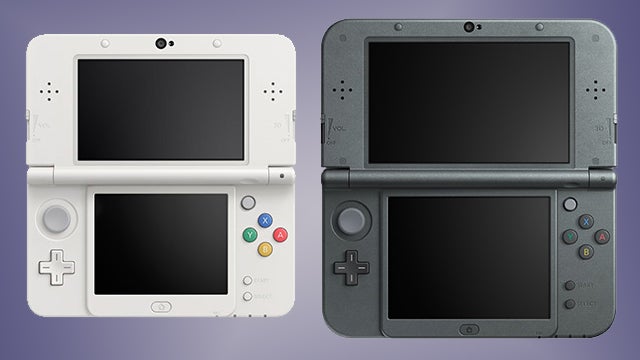Two new Nintendo 3DS models announced in Japan

Nintendo has announced two new Nintendo 3DS models during a Direct stream.
The Japanese gaming giant unveiled two new revamped versions of the existing models, simply calling them the new 3DS and new 3DS XL.
Although they may not sound that different, the new 3DS and new 3DS XL add several enhancements over the current iterations.
For starters you can see a small secondary analogue stick above the right hand face buttons, plus there’s extra ZR and ZL buttons to play with.
Those face buttons have also been given a SNES controller facelift with coloured buttons.
The 3D ghosting effect has also been minimised. Using the 3DS’ camera, the new versions can track the player’s head and adjust the 3D sweet spot accordingly.
Nintendo has also introduced a new CPU, which should make the OS processing a lot faster.
Unlike the previous iterations, the new models also support NFC on the bottom half, which is perfect for the new Amiibo figurines coming out in 2015. It negates the need for an additional accessory a la Skylanders Trap Team for tablet.
Although both initially are Japan exclusives for 2014, Nintendo has confirmed they will make their way to the EU and the US sometime in 2015.
“Different territories make their own business decisions regarding individual products and timing. We plan to launch these products in Europe in 2015,” explained Nintendo in a statement.
They will launch in Japan on Octoboer 11. The new 3DS will cost 16,000 yen (£90), while the larger new 3DS XL is 18,800 yen (£108).
For those looking for a bit of customisation, the new 3DS supports custom faceplates, with around 40 different versions shown off already for the Japanese market.


